Scaffolding Rental Henryetta
Best Scaffolding Hire in Henryetta
Get up to 3 Rent Scaffolding quotes for your project today! Compare profiles, reviews, accreditations, portfolio, etc... and choose the best deal.
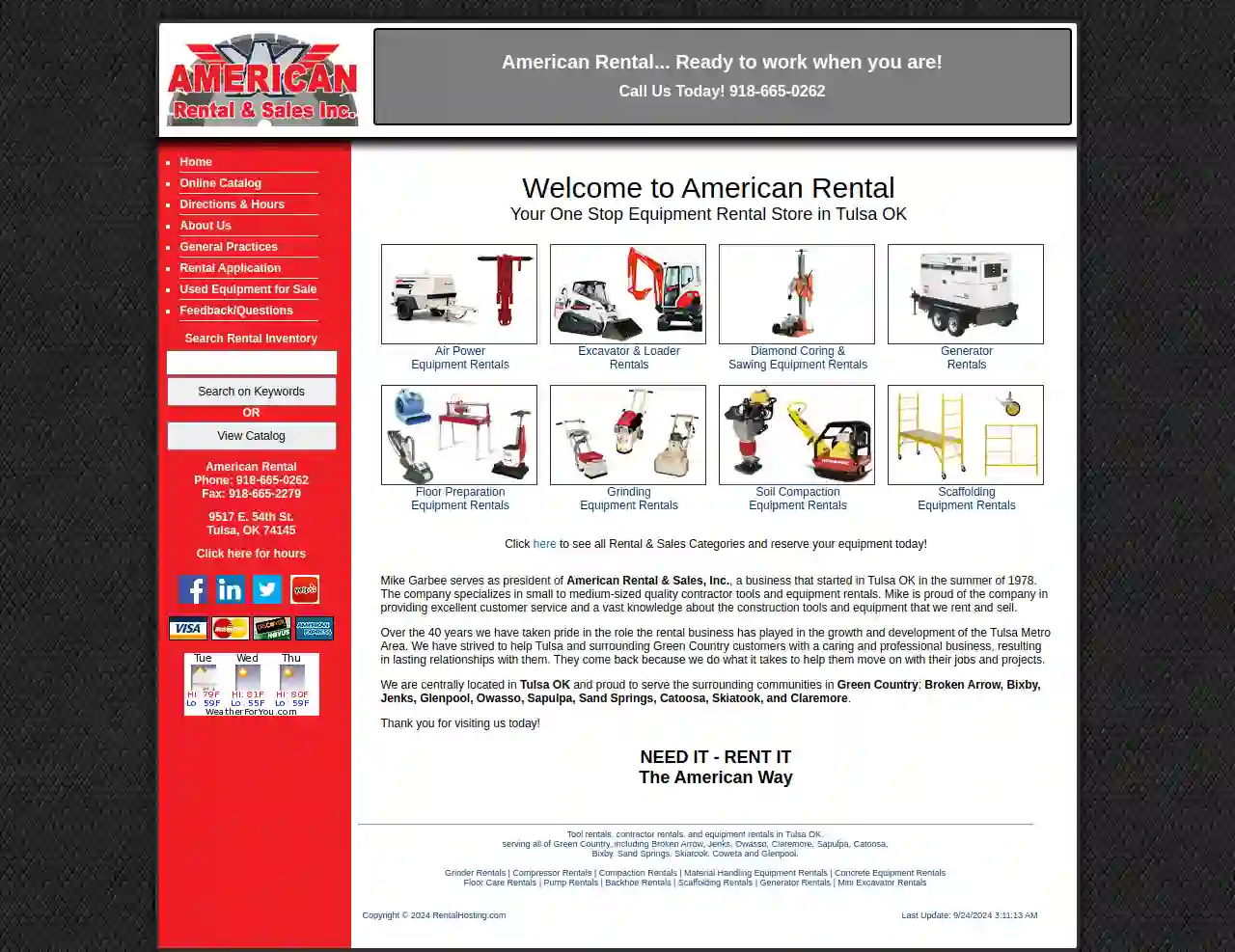
American Rental and Sales Inc
51 reviews9517 E. 54th St., Tulsa, 74145, USAmerican Rental & Sales, Inc. is a business that started in Tulsa, OK in the summer of 1978. The company specializes in small to medium-sized quality contractor tools and equipment rentals. With over 40 years of experience, they have taken pride in the role the rental business has played in the growth and development of the Tulsa Metro Area. They strive to provide excellent customer service and a vast knowledge about the construction tools and equipment that they rent and sell. They are centrally located in Tulsa, OK and proud to serve the surrounding communities in Green Country, including Broken Arrow, Bixby, Jenks, Glenpool, Owasso, Sapulpa, Sand Springs, Catoosa, Skiatook, and Claremore. They offer a wide range of equipment rentals, including air power equipment, excavator and loader rentals, diamond coring and sawing equipment rentals, generator rentals, floor preparation equipment rentals, grinding equipment rentals, soil compaction equipment rentals, and scaffolding equipment rentals. They are committed to helping their customers move forward with their jobs and projects, and they are proud of the lasting relationships they have built with their customers over the years.
- Services
- Why Us?
- Accreditations
- Our Team
- Gallery
Get Quote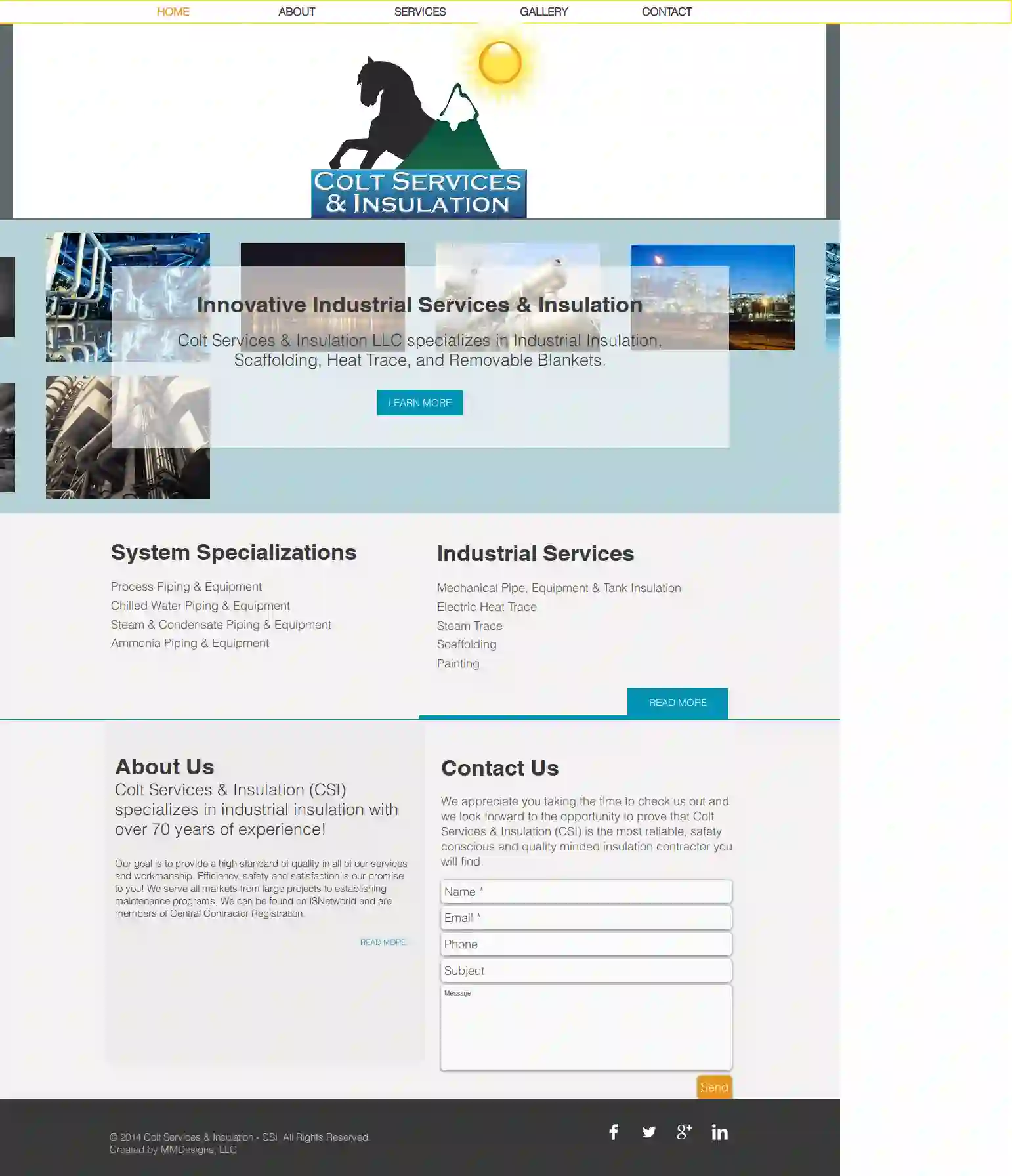
Colt Services
Tulsa, USColt Services & Insulation (CSI) specializes in industrial insulation with over 70 years of experience! Our goal is to provide a high standard of quality in all of our services and workmanship. Efficiency, safety and satisfaction is our promise to you! We serve all markets from large projects to establishing maintenance programs. We can be found on ISNetworld and are members of Central Contractor Registration.
- Services
- Why Us?
- Gallery
Get Quote
Thermal Insulation Pipe Solutions
4.84 reviewsTulsa, USAbout TIPS Plant Services With over 15 years of industrial and commercial insulation experience, we are the premiere choice for all of your insulation requirements. Ensuring that all jobs, no matter how big or small in scope, are finished on time and to the highest standards, all of the lowest prices possible, guarantees a stress free and budget saving environment for our clients. Established 2008 Clients More Than 500 Projects Completed Over 6287
- Services
- Why Us?
- Gallery
Get Quote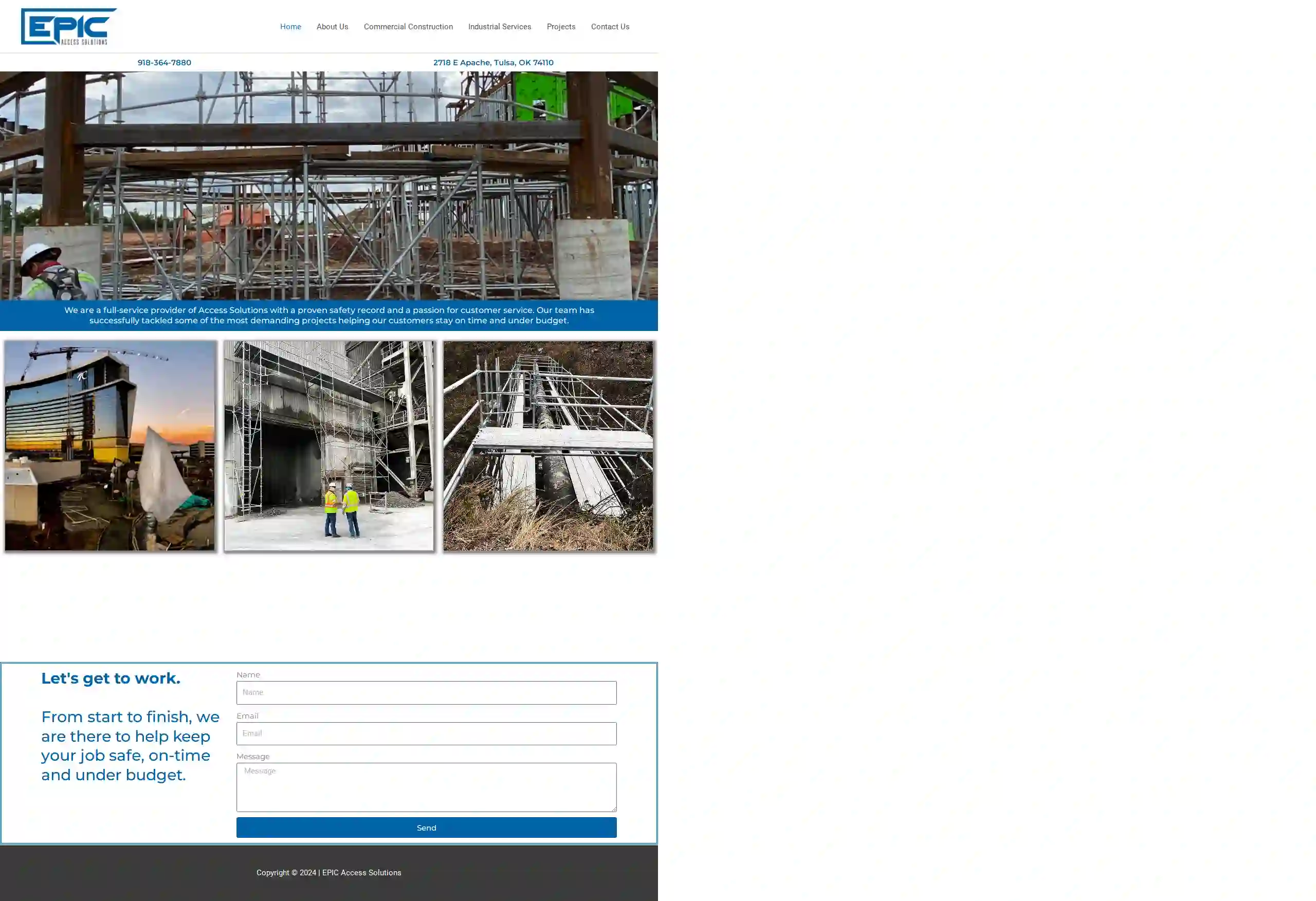
EPIC Access Solutions
4.25 reviews2718 E Apache, Tulsa, OK, 74110, USEPIC Access Solutions is a full-service provider of Access Solutions with a proven safety record and a passion for customer service. Our team has successfully tackled some of the most demanding projects, helping our customers stay on time and under budget. We specialize in Commercial Construction, Industrial Construction, and Civil Construction. Our commitment to safety is reflected in our excellent safety record and low EMR score. We are responsive, precise, and dedicated to making your job a success. From start to finish, we are there to help keep your job safe, on-time, and under budget.
- Services
- Why Us?
- Accreditations
- Our Team
- Testimonials
- Gallery
Get Quote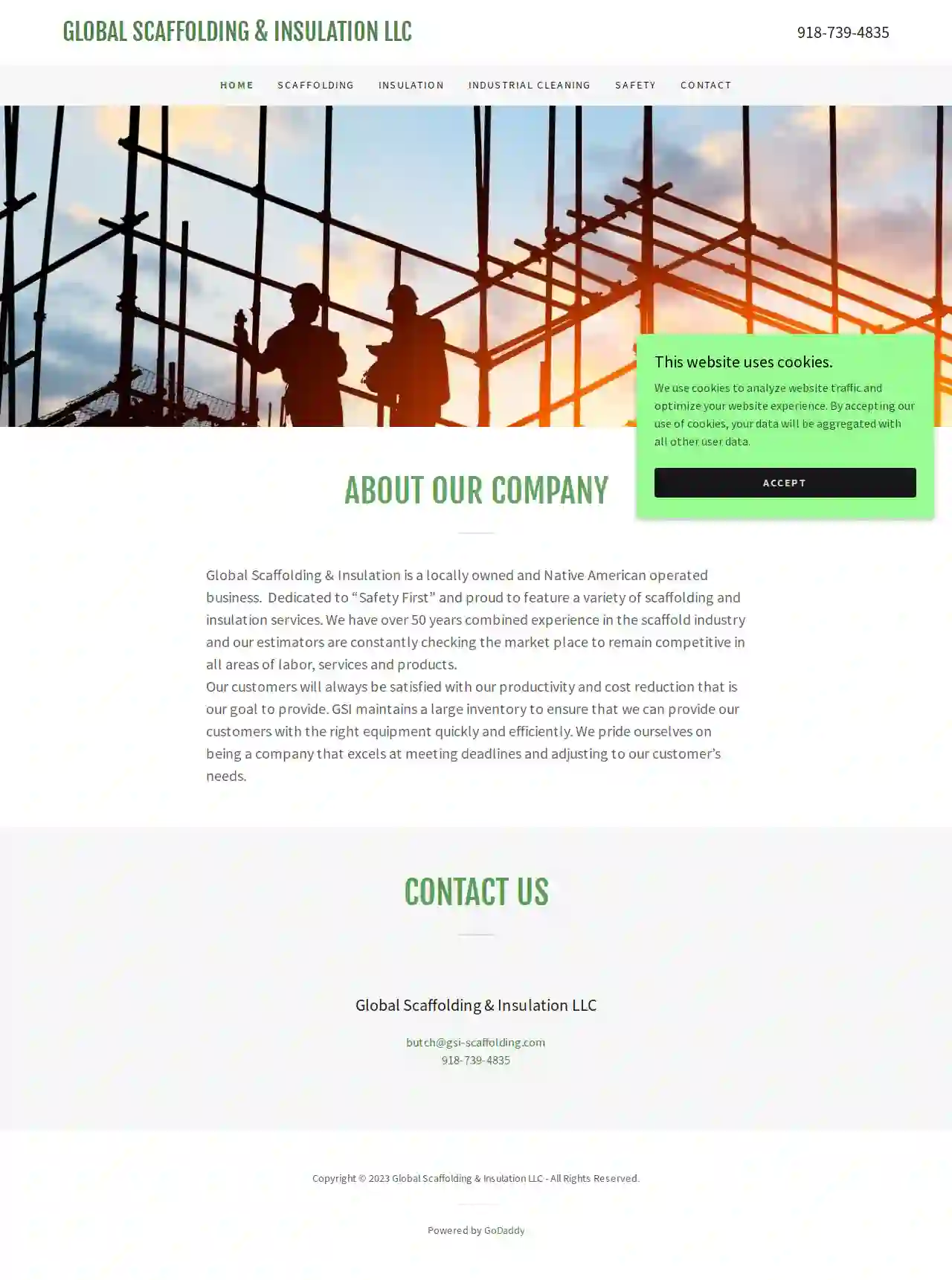
Global Scaffolding and Insulation
4.49 reviewsGlobal Scaffolding & Insulation LLC, 918, USGlobal Scaffolding & Insulation LLC is a locally owned and Native American operated business. Dedicated to “Safety First” and proud to feature a variety of scaffolding and insulation services. With over 50 years combined experience in the scaffold industry, our estimators constantly check the market place to remain competitive in all areas of labor, services, and products. Our goal is to provide our customers with productivity and cost reduction, ensuring satisfaction with our services. We maintain a large inventory to provide the right equipment quickly and efficiently, exceling at meeting deadlines and adjusting to customer needs.
- Services
- Why Us?
Get Quote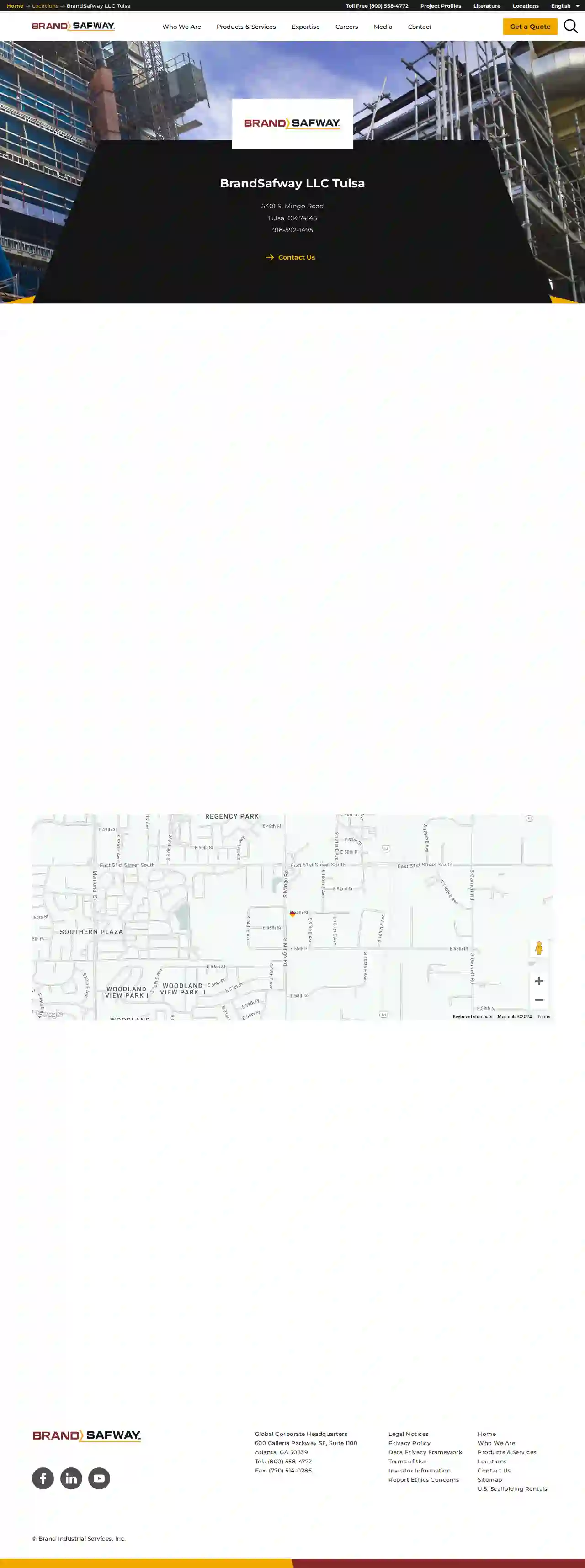
BrandSafway LLC Tulsa
4.413 reviews123 BrandSafway Blvd, Tulsa, 12345, USBrandSafway is a leading provider of access solutions, including scaffolding, aerial work platforms, and forming and shoring. With a strong commitment to safety, quality, and customer satisfaction, BrandSafway offers a wide range of services tailored to meet the unique needs of clients across various industries. Their team of experienced professionals is dedicated to delivering innovative solutions that enhance efficiency and productivity, ensuring successful project outcomes.
- Services
- Why Us?
- Accreditations
- Our Team
- Testimonials
Get Quote- Su
Sunbelt Rentals Scaffold Services
510 reviewsTulsa, US- Services
- Why Us?
Get Quote - AB
ABC Equipment Rental
4.6311 reviewsTulsa, US- Services
- Why Us?
Get Quote - Un
United Rentals
4.849 reviewsTulsa, US- Services
- Why Us?
Get Quote - La
Ladders Of Tulsa
4.913 reviewsTulsa, US- Services
- Why Us?
Get Quote
Over 2,353+ Scaffolding Contractors in our network
Our scaffolding experts operate in Henryetta and beyond!
ScaffoldingHQ has curated and vetted the Best Scaffolding Contractors in Henryetta. Find the most trustworthy business today.
Frequently Asked Questions About Scaffolding Rental
- Save Time: Easily compare quotes from multiple reputable scaffolding rental companies in one place.
- Find Local Providers: Quickly locate scaffolding companies serving your area.
- Get Competitive Rates: Access a network of rental providers, allowing you to compare prices and find the best deal.
- Ensure Safety and Quality: We partner with companies that prioritize safety and adhere to industry standards.
- Access Expert Support: Our customer support team is here to assist you throughout the rental process.
- Online Directories: ScaffoldingHQ is a specialized directory that connects you with reputable rental providers.
- Search Engines: Search for 'scaffolding rental [your location]' on Google or other search engines.
- Local Business Listings: Check local business listings, such as Yelp or Yellow Pages, for scaffolding rental companies.
- Word-of-Mouth Referrals: Ask contractors, builders, or friends for recommendations.
- Residential: Roofing repairs and replacements, siding installations, painting projects, window replacements, gutter cleaning and repairs, chimney repairs, solar panel installations.
- Commercial: Building construction and renovations, facade repairs and cleaning, window cleaning, painting, sign installation, and maintenance of high-rise structures.
- Industrial: Plant maintenance, access to elevated equipment, tank inspections and repairs, bridge repairs, and other industrial construction projects.
- Events: Temporary stages, grandstands, lighting and sound rigging, and platforms for concerts, festivals, and sporting events.
- Working Height: Measure the height of the area you need to access, adding a safety margin for guardrails.
- Project Scope: Consider the tasks you'll be performing on the scaffolding and the space required for workers, materials, and equipment.
- Site Access and Constraints: Evaluate the available space for erecting the scaffolding and any obstacles (trees, structures, utilities) that might restrict size.
What are the benefits of using a scaffolding directory like ScaffoldingHQ?
How do I find scaffolding rental companies near me?
What are some common uses for scaffolding rentals?
How do I know what size scaffolding I need?
What are the benefits of using a scaffolding directory like ScaffoldingHQ?
- Save Time: Easily compare quotes from multiple reputable scaffolding rental companies in one place.
- Find Local Providers: Quickly locate scaffolding companies serving your area.
- Get Competitive Rates: Access a network of rental providers, allowing you to compare prices and find the best deal.
- Ensure Safety and Quality: We partner with companies that prioritize safety and adhere to industry standards.
- Access Expert Support: Our customer support team is here to assist you throughout the rental process.
How do I find scaffolding rental companies near me?
- Online Directories: ScaffoldingHQ is a specialized directory that connects you with reputable rental providers.
- Search Engines: Search for 'scaffolding rental [your location]' on Google or other search engines.
- Local Business Listings: Check local business listings, such as Yelp or Yellow Pages, for scaffolding rental companies.
- Word-of-Mouth Referrals: Ask contractors, builders, or friends for recommendations.
What are some common uses for scaffolding rentals?
- Residential: Roofing repairs and replacements, siding installations, painting projects, window replacements, gutter cleaning and repairs, chimney repairs, solar panel installations.
- Commercial: Building construction and renovations, facade repairs and cleaning, window cleaning, painting, sign installation, and maintenance of high-rise structures.
- Industrial: Plant maintenance, access to elevated equipment, tank inspections and repairs, bridge repairs, and other industrial construction projects.
- Events: Temporary stages, grandstands, lighting and sound rigging, and platforms for concerts, festivals, and sporting events.
How do I know what size scaffolding I need?
- Working Height: Measure the height of the area you need to access, adding a safety margin for guardrails.
- Project Scope: Consider the tasks you'll be performing on the scaffolding and the space required for workers, materials, and equipment.
- Site Access and Constraints: Evaluate the available space for erecting the scaffolding and any obstacles (trees, structures, utilities) that might restrict size.